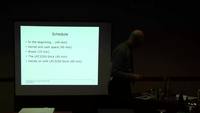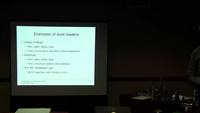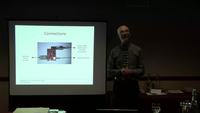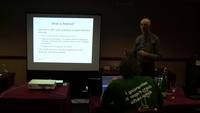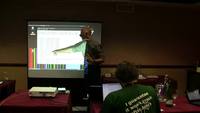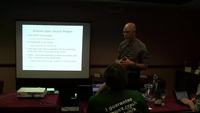 Bootlin is not in the system administration business (we offer free and open-source solutions for embedded systems), but we do our best to share whatever experience we acquire, and whatever code we produce.
Bootlin is not in the system administration business (we offer free and open-source solutions for embedded systems), but we do our best to share whatever experience we acquire, and whatever code we produce.
We configured a KVM virtual machine to run our mailing lists, and we used Ubuntu 10.04, the long term support (LTS) version. Here are instructions based on this experience. You could also use the same instructions to install Ubuntu 10.04 on a tiny, low power ARM board. And if you wish to use a more recent version of Ubuntu, I expect the steps to be very similar.
Here we assume that your domain is example.com and that you install your mailing list software on lists.example.com. It is indeed a good idea to install your mailing list software on a different server. This way, you won’t mess up with your main web and mail servers. Not having CGI scripts running on it will also keep your main mail server more secure.
Install packages
Install the Apache web server. It will allow administrators to configure and manage the lists, and users to subscribe, unsubscribe and tune their subscription settings.
sudo apt-get install apache2
For e-mail delivery, I chose the Postfix MTA (Mail Transport Agent). Exim would have been a good solution too, but I am more familiar with Postfix, which is already in use on our main mail server.
sudo apt-get install postfix
Choose the Internet site option.
Now install the mailman package:
sudo apt-get install mailman
Select the languages that you want your mailing list interfaces to support. I chose English and French for the moment. To add more languages later, run:
sudo dpkg-reconfigure mailman
Configure the Apache web server
First copy the sample Apache configuration file provided by the mailman package:
cp /etc/mailman/apache.conf /etc/apache2/sites-available/mailman
Now, in /etc/apache2/sites-available/mailman, enable short URLs by enabling:
ScriptAlias /mailman/ /usr/lib/cgi-bin/mailman/
Also modify /etc/mailman/mm_cfg.py:
DEFAULT_URL_PATTERN = 'http://%s/mailman/'
The last step is to enable your mailman site in Apache:
sudo a2ensite mailman
sudo /etc/init.d/apache2 restart
You should now have a new symbolic link in /etc/apache2/sites-enabled/.
Check that the Mailman website works by opening your mailing lists home page: http://lists.example.com/mailman/listinfo. It should look like https://lists.bootlin.com/mailman/listinfo.
Configure postfix
Enable the following line in /etc/mailman/mm_cfg.py:
MTA='Postfix'
Once the MTA is configured, generate Mailman specific aliases for Postfix:
sudo /usr/lib/mailman/bin/genaliases
Now, you need to configure Postfix through its main.cf file. A convenient way to do this is to run the below commands:
sudo postconf -e 'relay_domains = lists.example.com'
sudo postconf -e 'transport_maps = hash:/etc/postfix/transport'
sudo postconf -e 'mailman_destination_recipient_limit = 1'
sudo postconf -e 'alias_maps = hash:/etc/aliases, hash:/var/lib/mailman/data/aliases'
Also add the following line to /etc/postfix/transport:
lists.bootlin.com mailman:
and run:
sudo postmap -v /etc/postfix/transport
You won’t have any mail delivery if you forget. I struggled for a few hours before I realized I forgot this setting.
Now, set correct file ownership:
sudo chown root:list /var/lib/mailman/data/aliases
sudo chown root:list /etc/aliases
For logging and debugging e-mail delivery, I recommend to install the sysklogd package. Without it, you won’t have any mail.info, mail.warn and mail.err files in /var/mail/.
To install this package, enable the universe repository if needed (uncomment the lines with universe in the /etc/apt/sources.list file), and run:
sudo apt-get update
sudo apt-get install sysklogd
To avoid having two mail.info and mail.log files with identical contents, edit /etc/syslog.conf and remove the below line:
mail.* -/var/log/mail.log
Also create a /etc/logrotate.d/mail file to rotate logs, as in the below example:
/var/log/mail.* {
daily
size 10M
rotate 4
compress
missingok
notifempty
create 640 root adm
}
Last but not least, restart Postfix:
/etc/init.d/postfix restart
At this point, a good idea is to check that mail delivery works:
sudo apt-get install bsd-mailx
mailx alice@example.com
Subject: test
test
.
Cc:
Note: that’s the line containing only a dot character that allows to terminate the message.
If the receipient doesn’t receive this message, there is an issue in the way your mail server is configured. This could be because the firewall doesn’t allow connections to outside machines through tcp port 25. Anyway, look at the logs in /var/log/mail.* to get a clue. There is no point going on in this howto until you get this fixed.
Creating the mailman site list
Mailman needs a so-called “site list”, which is the list from which password reminders and such are sent out from. The default name for this list list mailman, though you can change this through the MAILMAN_SITE_LIST setting in /etc/mailman/mm_cfg.py.
To create this list, run:
sudo newlist mailman
You will have to answer a few questions like:
Enter the email of the person running the list: postmaster@example.com
Initial newsletter password: xxx
Hit enter to notify newsletter owner...
Choose the password carefully, as crackers will be able to highjack your mailing list if it is too easy to guess.
The next required step is to add the list aliases to /etc/aliases:
# mailman mailing list
mailman: "|/var/lib/mailman/mail/mailman post mailman"
mailman-admin: "|/var/lib/mailman/mail/mailman admin mailman"
mailman-bounces: "|/var/lib/mailman/mail/mailman bounces mailman"
mailman-confirm: "|/var/lib/mailman/mail/mailman confirm mailman"
mailman-join: "|/var/lib/mailman/mail/mailman join mailman"
mailman-leave: "|/var/lib/mailman/mail/mailman leave mailman"
mailman-owner: "|/var/lib/mailman/mail/mailman owner mailman"
mailman-request: "|/var/lib/mailman/mail/mailman request mailman"
mailman-subscribe: "|/var/lib/mailman/mail/mailman subscribe mailman"
mailman-unsubscribe: "|/var/lib/mailman/mail/mailman unsubscribe mailman"
In addition to delivering e-mail to the mailing lists, these aliases also allow to subscribe and unsubscribe by writing to special e-mail addresses.
You also need to run the newaliases command, without which there is no e-mail delivery:
sudo newaliases
sudo /etc/init.d/postfix restart
sudo /etc/init.d/mailman restart
Look at the /var/log/mailman/error file for potential issues.
Create regular mailing lists
Regular mailing lists are created in the same way as above: Assuming you want to create a newsletter mailing list. You will need run:
sudo newlist newsletter
Add your new mailing list to /etc/aliases:
# newletter mailing list
newsletter: "|/var/lib/mailman/mail/mailman post newsletter"
newsletter-admin: "|/var/lib/mailman/mail/mailman admin newsletter"
newsletter-bounces: "|/var/lib/mailman/mail/mailman bounces newsletter"
newsletter-confirm: "|/var/lib/mailman/mail/mailman confirm newsletter"
newsletter-join: "|/var/lib/mailman/mail/mailman join newsletter"
newsletter-leave: "|/var/lib/mailman/mail/mailman leave newsletter"
newsletter-owner: "|/var/lib/mailman/mail/mailman owner newsletter"
newsletter-request: "|/var/lib/mailman/mail/mailman request newsletter"
newsletter-subscribe: "|/var/lib/mailman/mail/mailman subscribe newsletter"
newsletter-unsubscribe: "|/var/lib/mailman/mail/mailman unsubscribe newsletter"
Then, run the usual commands:
sudo newaliases
sudo /etc/init.d/postfix restart
sudo /etc/init.d/mailman restart
Configuring your lists
The easiest way to configure your lists and add members is to open the http://lists.example.com.com/mailman/listinfo URL with a browser.
A few things are also possible from the command line. For example, you can add a member as follows:
echo "alice@example.com" > /tmp/foo
sudo add_members -r /tmp/foo newsletter
Enabling archives
Default file permissions are not completely ready to support mailing list archives:
sudo chown -R root:list /var/lib/mailman/archives
sudo chmod o+rX /var/lib/mailman/archives/private
The second line allows the webserver to access the archives. Note that these settings were forgotten in the official Ubuntu documentation.
Settings for newsletter mailing lists
At Bootlin, we also use Mailman to deliver our newsletters. Mailman provides recipients with an easy mechanism to subscribe by themselves and unsubscribe whenever they want.
To make it even easier to unsubscribe from a newsletter, Mailman can add a special footer to each recipient, with a custom URL that allows to unsubscribe without having to remember one’s password.
To enable this feature, you have to enable the following line in /etc/mailman/mm_cfg.py:
# Extra options
# Allow to personalize each message
# (useful to provide a password-less unsubscribe link)
OWNERS_CAN_ENABLE_PERSONALIZATION = 1
Restart Mailman (/etc/init.d/mailman restart) and go to the administrative interface for your list. Under Non digest options, you will then be able to set the Should Mailman personalize each non-digest delivery? option to Full Personalization.
Then, you can set a custom footer for each recipient in the Footer added to mail sent to regular list members option. Here is an example:
_______________________________________________
Bootlin quarterly newsletter
Unsubscribe: %(user_optionsurl)s?password=%(user_password)s
Archives: https://lists.bootlin.com/pipermail/newsletter/
Beware that sending custom e-mails to each recipient will increase the load on your server. You may not want to do this on mailing lists with great numbers of subscribers.
Useful resources
The below ressources were useful to prepare this HOWTO document:
Don’t hesitate to ask questions and give feedback by leaving a reply below.
 After months of preparation, and after completing our first Android system development training session, we are proud to release our complete training materials under the Creative Commons Attribution – Share Alike 3.0 license.
After months of preparation, and after completing our first Android system development training session, we are proud to release our complete training materials under the Creative Commons Attribution – Share Alike 3.0 license.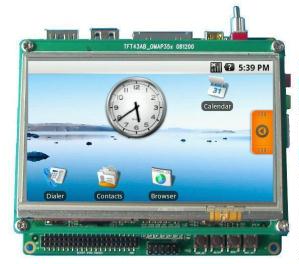 Practical labs are conducted on the Devkit8000 embedded board from Embest, with a TI OMAP3 CPU and an LCD touchscreen. As we use Linaro Android in our labs, it should be relatively easy to make these labs on other development boards with a Linaro supported CPU (TI OMAP, Freescale i.MX53 and i.MX6, ST Ericsson Nova and Samsung Exynos).
Practical labs are conducted on the Devkit8000 embedded board from Embest, with a TI OMAP3 CPU and an LCD touchscreen. As we use Linaro Android in our labs, it should be relatively easy to make these labs on other development boards with a Linaro supported CPU (TI OMAP, Freescale i.MX53 and i.MX6, ST Ericsson Nova and Samsung Exynos).
 To meet increasing demand for its Embedded Linux, kernel and Android engineering services, Bootlin is looking for developers:
To meet increasing demand for its Embedded Linux, kernel and Android engineering services, Bootlin is looking for developers: Bootlin is not in the system administration business (we offer free and open-source solutions for embedded systems), but we do our best to share whatever experience we acquire, and whatever code we produce.
Bootlin is not in the system administration business (we offer free and open-source solutions for embedded systems), but we do our best to share whatever experience we acquire, and whatever code we produce. I was invited to speak at the
I was invited to speak at the 